Tree Surgeons: There are numerous homes in the UK that have gardens containing trees. While trees are both pleasant to look at and good for the environment they do need to be looked after. They can become overgrown, be affected by disease, and often need pruning and other routine maintenance tasks. When the weather in the UK is windy, trees can even be a danger to vehicles, property or even passers-by, as as branches or even whole sections of tree can snap off and drop to the earth. Essentially, you're the person who is answerable for looking after any trees on your home or business premises in the UK.
If you are a passionate gardener there may be a few tree care practices that you're able to carry out on your own, especially with fruit trees, smaller trees, bushes and hedges. If they can be reached from the ground, overgrown branches can be pruned and trimmed without too much fuss, and these are tasks that you could certainly have a go at if you know what you're doing, have the suitable tools and are self-confident. If however you have large trees which need to be climbed or accessed by ladders, expert help should be sought, and you should not try to do this yourself.
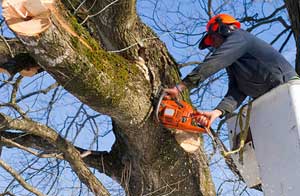
There are a number of risks concerning working at height up a tree, and aside from you falling and hurting yourself, you may also drop equipment or heavy branches that cause harm to those walking or standing beneath. Just the thought of an inexperienced gardener wielding a powered-up chainsaw while balancing precariously up a tree ought to send shivers up your spine, and with any luck, make you think again.
Your thoughts may at first turn to employing a gardener to conduct the required work on your trees. However this would be a miscalculation, since the vast majority of gardeners in the UK don't have the desired training and qualifications for this type of work, and could potentially even harm your trees. The tradesperson that you actually need is a tree surgeon, who will have all the appropriate equipment and tools for any kind of tree care work. Depending on the scale of the work needed, and the type and size of trees you have in your garden in the UK, certain specialist equipment such as wood chipping machinery, chainsaws and harnesses, could be necessary.
While you may find a number of folks in the UK who profess to be tree surgeons, only a genuine tree surgeon will be competent in the use of such machinery and tools, will be qualified in arboriculture and will be able to show you certifications such as:
- CS30 (NPTC 201/202) - Chainsaw maintenance & cross-cutting.
- CS39 (NPTC 308) - Aerial cutting of trees using free-fall techniques.
- CS31 (NPTC 203) - Fell & process small trees up to 380mm (15") in diameter.
- CS38 (NPTC 206/306) - Climb a tree and carry out aerial rescue.
Tree surgeons should also hold the Forestry First Aid Level 3 FAW+F qualification. It's crucial that all professional tree surgery in the UK is performed to British Standards BS3998 (2010) procedures.
Those are the main qualifications that you should be on the lookout for when you're searching for a genuine tree surgeon in the UK. If when asked about these certifications, the individual you're thinking of using is vague and uncooperative, you should find a better candidate. If a local UK tree surgeon can also provide a City and Guilds or other qualifications in forestry, countryside management, forest management, woodland conservation & ecology and arboriculture, you can assume that they're even more experienced than most.

A wide range of tasks can be accomplished by a fully qualified tree surgeon in the UK, including stump grinding, tree surgery, the protection of trees from grazing, transplanting, tree removal, tree felling, pest control, disease identification and tree planting.
For most homeowners in the UK this will most likely involve storm damage restoration, crown raising, tree felling, crown thinning, staking, crown cleaning, crown shaping, pruning etc.
It is essential that all UK tree surgeons are familiar with, and competent in using loppers, winches, slacklines, climbing ropes, pole saws, lowering winches, chain saws, wood shredders, stump grinders, rigging ropes, harnesses, rigging pulleys, and the whole gamut of tree surgery tools and paraphernalia. If your so-called 'tree surgeon' arrives on the job with nothing more than a hand saw and a ladder, the alarm bells should be sounding, and unless you want a bodge job you must send them on their way.
Before you do any significant work on your trees in the UK, you must ensure that there is not a TPO (Tree Preservation Order) on any of them. You need to contact your local planning authority to find out if any of the trees on your property are subject to Tree Preservation Orders. You could ask if your tree surgeon will help with this process, any decent one will be glad to offer advice.
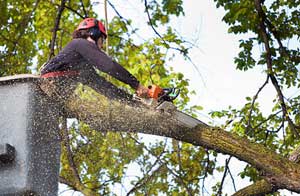
You can begin your quest to find a decent tree surgeon in the UK, once you have established that you need professional help with the trees on your property. There are of course several ways in which you can achieve this. If neighbours and friends have used a tree surgeon, you can get a recommendation from them. You can search for the websites of local UK tree surgeons on the internet. You could enter your requirements on My Builder, Quotatis, Rated People, or one of the other online trade portals. You could check out the Yellow Pages or your local newspaper classified listings. This should provide you with several possible options.
To find the crème de la crème of tree surgeons in the UK, you can turn to the Arboricultural Association, who have got a register of approved contractors, who comprise the top two percent of Great Britain's companies. They've reached:
- Development and training.
- Compliance with environmental practices.
- Compliance with health and safety legislation.
- Knowledge, operations and high work standards.
- High levels of service to clients.
When it comes to tree surgery in the UK you should steer clear of rogue traders, cowboys and jack-of-all-trades types. As we've already stated, tree surgery is incredibly hazardous work, and you will be courting disaster if an inexperienced individual is allowed to hack away at your trees.
Furthermore, your trees are precious things and if the work is not done by someone who is experienced they may well be irreparably harmed or damaged. Trees that are treated, lopped or pruned at the wrong time of year or in the wrong way, can have their health affected in devastating ways, therefore my recommendation is - only hire professionals.
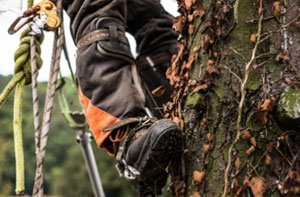
You should always ask for at least three or four estimates from different tree surgery companies in the UK, to get a selection of prices. Don't just hire the tree surgeon who offers to work for the cheapest price, consider all the quotations you have received and do some extra research.
You should always try to ask plenty of questions, and from the way they answer, your should get a perception of how much they know. Make certain that they have the required insurance, and establish what is included within the quote. You'll need to know whether waste removal is included in the price, and that they're going to remove all the waste and branches that result from the work.
It might also be advisable to request some references from past customers. They'll be delighted to furnish you with references and perhaps even some photographs of work that they've completed if they are a trustworthy company. To discover how a company functions and how content it's customer base is, you should also take a look at it's Facebook page (if it has one).
Local UK tree surgeons are likely to have the dialling code 044 and the postcode UK. They will operate in UK itself, along with nearby areas like Sheffield, Edinburgh, Scotland, Greater Manchester, Cardiff, Wales, Liverpool, Glasgow, Northern Ireland, Bristol, Birmingham, London, England, Swansea, Belfast, and these postcodes: RG12 2GP, RG12 0PH, RG12 2AQ, RG12 1AJ, RG12 1FE, RG12 1AW, RG12 0UW, RG12 1FQ, RG12 1NA, RG12 1LZ. Checking this should confirm you're accessing a local tree surgeon. UK property owners will be able to benefit from these and countless other comparable services.
If you need this sort of assistance it's certainly best to employ a trusted tree surgeon. UK householders can greatly benefit from the skills and knowhow that a fully trained professional can offer.
Tree Surgery Training - Courses - Apprenticeships UK

For anybody who loves the outdoors, going into an occupation in a profession like tree surgery can be incredibly rewarding and fulfilling. Upon investigation, you'll find out that there are several avenues into employment in tree surgery including opportunities like being accepted into a tree surgery apprenticeship, beginning at the bottom (maybe as a groundworker) and working your way up, subscribing to a private course, enrolling for a college course or taking a university course. When they're available, tree surgery apprenticeships in the UK can be applied for whilst still attending school. All over the UK, there are college and private courses in tree surgery, and folks of any age can register. University courses are available in various fields including forestry, countryside management, forest management, woodland conservation & ecology and arboriculture, with higher national diplomas, foundation degrees and degrees available to those with the appropriate qualifications (normally one to three "A" levels). If none of the options above get you inspired, it may be possible to get some tree surgery experience by doing voluntary work for groups and organisations like the National Trust, the Woodland Trust, the Tree Council or the Forestry Commission. I really hope that this brief article has proved helpful if you came here searching for advice on "how to become a tree surgeon in the UK". The place to visit to find out all there is to know about how to become a tree surgeon is the official website of the government endorsed National Careers Service. (Tags: Tree Surgery Courses UK, Tree Surgery Training UK, Tree Surgery Apprenticeships UK)
Getting Advice and Guidance
When you're searching for a tree surgeon or arborist in the UK, there are a few questions that you should ask to make certain they are both competent of doing the task, and will not do any permanent damage to your trees. Pertinent questions will include: Do your team and you have the required qualifications and certificates (for tree care and the use of chainsaws)? Are you able to give references from satisfied customers? Are you joined to a professional trade organisation (such as The Arboricultural Association or the International Society of Arboriculture)? Will you give me a written quote? Do your working practices satisfy the British Standard (BS3998)? Do you have public liability and employment insurance? If you're not given satisfactory replies to any of those questions, it is recommended that you look elsewhere for a tree surgeon.

You'll find a searchable directory of capable tree surgeons in the UK on the Arboricultural Association site, and also find a lot of handy information about how to pick a good tree surgeon. The ISA is another excellent resource which includes a "verify credentials" tool (here) and a "find a tree surgeon" tool. You are also able to read a lot of facts about tree surgery as a profession if you visit the Wikipedia "Arborist" article here. A Government financed organisation where you can also locate professional trades-people including tree surgeons, comes in the shape of Trustmark.
Crown Thinning UK
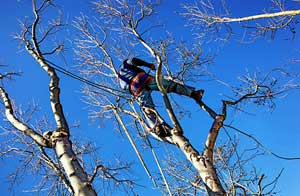
Eliminating lesser living branches towards the outer part of the tree's crown, yet not adjusting the size or shape of the tree, is called crown thinning. This process is meant to generate a consistent leaf density, which in itself accomplishes several aims such as: to reduce the chance of the tree uprooting in blustery weather, to help reduce the wind resistance of the tree, to decrease the weight of the crown of the tree, to permit more sunlight throughout or to ease the stress upon specific limbs as a result of gravity, ice, snow, or wind. Crown thinning should not change the general size and structure of the tree, but ought to create a uniform foliage density around uniformly spaced branches.
Protecting Trees & Shrubs in Winter
Although the winter climate is rarely severe enough to warrant protecting your trees and shrubs, it is definitely worth thinking about as a precautionary measure. Even the most hardy of trees, plants and shrubs can find it challenging during the winter months, and a little bit of extra protection during times of severe cold will certainly benefit them.
Obviously where trees are involved it's strong winds that can be the biggest problem and although many trees will have already shed their leaves, they may still be susceptible to damage in windy weather. If a tree on your property is swaying precariously in the wind, or has been damaged by gales, a local tree surgeon should be brought in to conduct an examination. Damage to trees can also result from heavy snowfall, therefore when this sort of weather is on the cards, keep an eye out for issues. Some trees and shrubs, especially recently planted ones, might need a little protection from ice and frost, and a substantial covering of mulch will help keep the soil frost-free around their bases.
Ash Dieback (Hymenoscyphus Fraxineus)
A harmful fungal disease which is expected to wipe out around eighty percent of the current UK ash trees, over the coming years, ash dieback (Hymenoscyphus fraxineus) was first documented in the United Kingdom in 2012, when a nursery imported 2000 trees from Holland. Set to have a massive impact on our beloved countryside, ash dieback is likely to be just as devastating as the previous epidemic of Dutch Elm Disease (DED).
Ash dieback has a particularly disastrous effect on the native British common ash (Fraxinus excelsior), although it affects the entire Fraxinus genus of trees, with varying levels of tolerance. Originating in eastern Asia where the native Manchurian ash (Fraxinus mandshurica) and Chinese ash (Fraxinus chinensis) are less susceptible to it, the fungus which causes ash dieback is called Hymenoscyphus fraxineus (H. fraxineus), and it kills a tree by obstructing its water transport (vascular) systems.
Dispersed by tiny spores that blow on the wind, which are produced by the fruiting bodies of the fungus, and are able to travel for many miles, ash dieback has now spread to most regions of Britain.
Ash dieback has an effect on trees of every age group and has symptoms such as:
- Wilting leaves that turn black in colour and drop early.
- New epicormic growth appears from previously dormant buds (common in trees under stress).
- Dying shoots and leaves that are visible during the summertime.
- Dark patches on leaves during mid to late summer.
- Dark brown lesions (often diamond shaped) form where branches meet with the trunk, and the inner bark under the lesions looks brownish grey.
Ash trees are able to fend off the disease to some degree, but ultimately die from sustained attacks, year-after-year. There is currently no cure for chalara ash dieback, and no clear method for stopping its spread.
If you think that you have spotted a tree suffering from ash dieback in your garden in the UK, or in the local neighbourhood, you could report it to the "Tree Alert Service" provided by the Forestry Commission, although the disease is so commonplace all over the United Kingdom that they're really only interested to know about cases discovered in areas not previously affected. You should still however speak to a local tree surgeon, who will offer guidance and advice about how to proceed.
(Tags: Identifying Ash Dieback, Ash Dieback UK, Ash Dieback Signs).Eco-Plugging Tree Stumps UK
If you've got large stumps in your garden that need to be removed, the customary method that's used by most tree surgeons in the UK is stump grinding. However, "eco-plugging" is now becoming increasingly more popular as an easier and more affordable alternative to this approach. Eco-plugging isn't just less costly, but it is also handy for use in hard-to-reach locations that are inaccessible to stump grinding machinery.
Without affecting any nearby trees and vegetation, eco-plugging is an effective treatment for eliminating tree stumps. Eco-plugs can be employed during any season of the year and in any weather conditions, and they kill off the whole root system of a stump. Containing a kind of granular glyphosate herbicide which is effective on a wide array of trees, eco-plugs work in 95% to 100% of cases. (Tags: Eco-Plugging Tree Stump Removal UK, Eco-Plugging UK, Eco-Plugs UK, Eco-Plug Stump Treatment UK).
Removing Tree Stumps UK
When you've got a tree that needs chopping down and removing on your property in the UK, there is also a stump to consider. You may consider allowing it to decay naturally, and be perfectly happy to leave it to its own devices. However, stumps can be an eyesore, be a trip hazard, and can attract unwelcome pests.
Stump removal or stump grinding are the 2 main alternatives, if you do opt to do away with the stump completely. In the following few sentences, we'll be considering the various methods of removal.
There are essentially three methods of getting rid of a tree stump - digging out by hand, chemical treatment or burning. If it's your intention to conduct the stump removal yourself, any of these methods could be an option. If a tree surgeon is going to be carrying out the work, stump grinding is usually their method of choice, however eco-plugging or some other chemically based treatment may also be offered.
Digging Out by Hand: Digging up a tree stump by hand is a fairly straightforward process, and involves digging out all the soil all around the stump, revealing and cutting all the thicker roots, and eventually freeing up the stump so that it can be hoisted out. You may need to use a cable ratchet winch for lifting out the stump. This has a tendency to be exhausting and laborious work, and should never be tackled unless you are fit and healthy.
Tree Stump Burning: Because it can be dangerous and might contravene local legislation, burning a tree stump isn't really recommended, so if you choose this approach, take care. A few one inch holes will need to be drilled into the stump, and for several days kept topped up with vegetable oil. You can then cover the stump with logs or charcoal and set it alight. This shouldn't ever be left to its own devices, but be continually supervised. Make sure that the fire is properly extinguished once it's totally burned out. You'll be able to dig out the stump remains and roots once it has completely cool.
This isn't the only method of burning a stump, and you could also try digging out all the soil from beneath the stump and setting a fire in the cavity which has been made underneath. Never set light to a stump if it is in close proximity to a building, other trees or fences.
Chemical Stump Removal: The chemical treatment option requires the use of a strong chemical substance for example Roundup Tree Stump Remover, Vitax SBK Stump Killer or Resolva Xtra Tough Tree Stump Killer. Avoid skin contact when working with these chemicals, and also try not to inhale. You must stick to the maker's instructions, for applications, timings and rates. This is a long, rather than short term stump removal solution, because it can take several weeks or even months to completely decay, subject to its dimensions. It will still have to be removed with a spade and an axe once it has rotted away completely.
Tree Surveys UK
Tree surveys might be required for a number of reasons, but most often when development or property extension is involved. If you happen to be clearing some land to make space for an extension to an existing property or a brand new home in the UK, for instance, you may need to conduct a tree survey to British Standards BS5837 (2012) if there are trees upon that land. All surveys on trees should be conducted by a qualified tree surgeon or tree surveyor, irrespective of whether they are being done on private or public property in the UK.
For the area in question, a broad range of information will be gleaned about all of the trees within it. For instance:
- The allocation of a tree reference number for each of the trees.
- The species of trees on the site.
- The number of trees.
- The spread of branches to South, East, West and North.
- The life expectancy of the trees.
- The diameter of each tree (taken 1.5m above the ground).
- Preliminary tree management recommendations.
- The health of the trees.
- The age of the trees (i.e. young, semi-mature, mature, over-mature and veteran).
- The height of each tree in metres.
- The existence of any TPOs.
If you're doing work on an existing home or property in the UK, and are not modifying the service lines or access points, or extending the building's footprint, you will most likely not need to do a tree survey. (Tags: Tree Surveys UK Tree Surveys, Tree Survey UK, Tree Surveyors UK).
Control of Vegetation

It is not only the maintenance and removal of trees that your local UK tree surgeon will be happy to help you with, but also any sort of rampant vegetation that's jungling up your land. Quality tree surgeons will generally be delighted to remove weeds, overgrown vegetation, bushes and shrubs which may be thriving around sheds, buildings, garages, pathways or drives, and causing an annoyance. If you are to manage your garden correctly then all this unwanted growth should be cut down every few months, and if you've got the inclination and time this is a job you might achieve by yourself if you are in good health, or you might ask your local tree surgeon to come now and again to make certain it is looking good. The control of vegetation is crucial if you are to maintain easy and safe entry to all parts of your garden and if this isn't done the vegetation and plants can soon take over and take away the enjoyment of your garden. Apart from anything else the garden will also look a lot better when maintained properly. (Tags: De-Vegetation Services UK, Vegetation Control UK, Vegetation Management UK)
Hedge Trimming UK
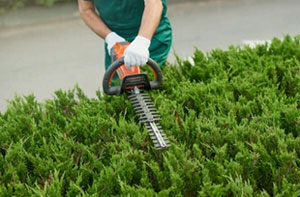
Although UK tree surgeons are mostly focused on the maintenance and care of trees they're often hired to cut back and trim hedges. Using a professional tree surgeon could be a huge benefit when working on conifer hedges (Leylandii for instance), which frequently grow too tall for a regular gardener to deal with, needing specialist tools to successfully manage.
Quickly getting out of control, a hedge that is uncared for and poorly maintained has the chance to become overgrown. If a hedge is allowed to run riot in your garden, it can be difficult to resolve down the road, therefore regular clipping is recommended for both the health and aesthetic appeal of your hedge.
You can help make your whole garden and home look neat by tidily clipping your hedges. And if you are intending to sell your property in the near future, neat hedges might even add some value. You can also obtain hedge trimming services in Sheffield, Edinburgh, Scotland, Greater Manchester, Cardiff, Wales, Liverpool, Glasgow, Northern Ireland, Bristol, Birmingham, London, England, Swansea, Belfast, and UK itself.
Wood Chipping UK
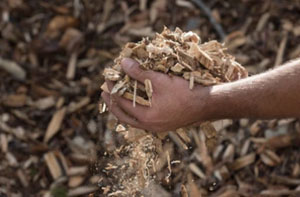
Most UK tree surgeons will use wood chipping devices to break down the smaller branches and tree limbs that are generated by their work. Although it depends on what equipment is being used, these impressive wood chipping machines can gobble up as much as forty tons of material every hour, and even the smaller, more frequently used machines can process around 5 tons every hour, or essentially as much as you can feed in.
As well as providing a handy material that can be used for a range of purposes including; ecosystem restoration, biomass fuel, wood pulp, landscaping, mushroom cultivation, garden pathways, weed prevention and mulch for gardens, chopping down waste material in this way makes it far easier to transport.
Should you decide that you wish to keep some of the wood chips that result from your tree surgery project, most UK tree surgeons will happily let you keep them. If you've got no use for them, they'll take them away for use on other jobs, or ethically dispose of them. Even when you don't need any tree surgery to be done on a property in the UK, tree surgeons are a reliable source for wood chippings which you can use throughout your garden. Wood chips are often available from tree surgeons for free, although if you need them to be delivered there will likely be a modest fee.
Wood chipping machines are made by various companies, some of the most recognised makes include Forst, T-Mech, Forest Master and Timberwolf. (Tags: Wood Chipping Services UK, Wood Chips UK, Wood Chippers UK, Wood Chipping UK).
Tree Root Problems UK
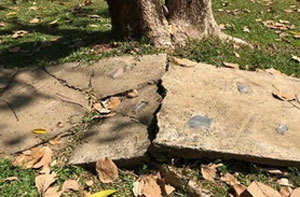
When they are growing too close to your property in the UK, some large trees have really aggressive roots, and can cause problems. Lifting patios, blocked drains and damaged foundations, are among the most widespread issues that you might run across. Willows, sycamores, elms and maples, are notorious for having very intrusive root systems.
If you've got plans to grow any new trees in your garden, it's recommended that you make sure they're positioned a fair distance from pathways, patios, your home and your sewerage pipes. If one or more of these issues is already being caused by pre-existing trees which are growing too near to your home, you should contact a tree surgeon in the UK for advice and guidance.
You should not try to deal with this yourself by simply hacking away at the invasive roots, because this could significantly threaten the health of the tree or even kill it. Knowing which roots should be left in place, and which roots can be cut back is the domain of the expert, and a competent UK arborist will make sure the tree can still get ample food and water to successfully survive.
Tree and shrub roots commonly cause cracks in underground drainage systems, as sewerage lines provide a constant source of moisture and nutrients. A drainage system's joints can soon be invaded by tiny roots, which when established can grow into huge root balls and ultimately cause blockages and joint failure. Specialist root removal solutions will be provided by some UK tree surgeons, who will use high pressure water jetting, electro-mechanical equipment or manual rodding to remove the offending roots. Root removal services are also available in Sheffield, Edinburgh, Scotland, Greater Manchester, Cardiff, Wales, Liverpool, Glasgow, Northern Ireland, Bristol, Birmingham, London, England, Swansea, Belfast, and in the UK itself.
Woodland Clearance UK
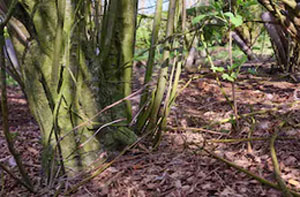
Engaging in woodland clearance in the UK area can be affected by national and local limitations in force, subject to where the ground is, and what bio-diversity is found in the area to be cleared. An experienced tree surgeon contractor in the UK will be able to offer you a full end to end service that will abide by all laws and covenants on the land, and also clear the area in an eco-friendly way.
A detailed habitat survey will be carried out by a tree surgeon who will also collaborate with woodland organisations and authorities to ensure that your clearance is done safely and legally. It could be that the land has got protected tree species or reptiles upon it, that will require relocation to another site that is protected, or other mitigation strategies to be employed.
The expensive and specialist chipping, mulching and felling equipment that's employed in woodland clearances means it is usually much more cost effective and efficient to bring in a qualified tree surgeon to carry out your project. (Tags: Woodland Preservation UK, Woodland Clearance UK, Woodland Management UK, Woodland Clearances UK).
Latest Tree Surgery Requests

In Lincoln, UK Mr Zac Barrow needs a tree surgeon to cut back 3 conifers and dispose of all the waste. In Oakham, UK Mrs Heather Gough needs a tree surgeon who can carry out some stump grinding to get rid of 4 big oak stumps. In Wrexham, Johnny and Lily-Mae Crane are in search of an expert who can do some hedge cutting and bush trimming. Mr Jeremy Kershaw from Falkirk wants somebody to cut a tall hornbeam hedge down to a six foot height and remove all the waste. Mr and Mrs Milford are hunting for somebody in Huntingdon who can completely remove a conifer and an oak tree, and cut back some other conifers. In Bangor Ms Saffron Stevens needs a tree surgeon to remove about six conifers of 150 - 200mm diameters. Ms Lexi Taggart was in search of a tree surgeon to undertake a bit of after winter hedge and tree pruning in her garden in Gateshead. In Maidstone, UK Mrs Agatha Garrett needs a tree surgeon to remove and dispose of a thirty ft monkey puzzle tree.
Tree Surgery Tasks UK

UK tree surgeons will likely help you with hedge cutting, health assessments, site clearance, crown reduction in the UK, crown removal, tree felling, tree transplanting, brush cutting, tree reshaping, crown lifting, shrub maintenance, formative pruning UK, cable bracing in the UK, root decompaction, stump removal in the UK, tree dismantling, pest management UK, hazard assessments, arboriculture, tree reduction, airspading, root flare exposure, hedge lowering, shielding trees from grazing, damaged tree removal, vegetation management, residential tree surgery, tree replanting in the UK, tree topping, tree fertilising UK, hedge reduction, coppicing, tree care in the UK, tree work UK, drop crotching and other tree surgeon services in the UK, UK. These are just a few of the duties that are conducted by a tree surgeon. UK specialists will be happy to tell you about their entire range of services.
Tree Surgeons UK
In the UK area you'll likewise find: Brighton tree care, Kings Lynn tree management, Stevenage tree care services, Woking tree surgery, Abingdon tree surgery, Oakham tree surgery, Birmingham tree care services, Solihull tree surgeons, Barnsley tree surgeons, Worthing tree surgeons, Clydebank tree management, Falkirk tree care services, Falkirk tree management, Elgin tree management, Huntingdon tree care, Dundee tree surgery, Lochgilphead tree management, Swindon tree management, Airdrie tree surgery, Forfar tree surgery, Barrhead tree surgeons, York tree care services, Lowestoft tree surgery, Penicuik tree surgeons, Gateshead tree surgery, Gateshead tree care services, Bristol tree management, Dartford tree surgeons. In every district of the UK region you'll be able to locate tree surgeons who'll provide high quality services for your tree care needs. If you're unable to find the ideal tree surgeon in the UK itself you will doubtless be able to find a good one nearby.
Tree Care Services UK
- UK Tree Topping
- UK Tree Removal
- UK Root Grinding
- UK Crown Lifting
- UK Crown Cleaning
- UK Tree Dismantling
- UK Hedge Reduction
- UK Woodland Clearances
- UK Air-Spading
- UK Arboriculture
- UK Vegetation Management
- UK Woodchipping
- UK Eco-Plugging
- UK Tree Surveys
More UK Tree Surgeons: UK tree surgeons: South Petherton, Aylestone, Brixworth, Thrapston, Castle Donington, Cromer, Glenfield, Ibstock, Bruton, Gerrards Cross, Caistor, Raunds, Groby, Market Drayton, Perton, Ashby De La Zouch, Branston, Cheadle, Louth, Burgh Le Marsh, Barton Upon Humber, Irchester, Quorn, Whitchurch, Kesgrave, Countesthorpe, Bourne, Bradwell, Tunstall, Woodbridge, Cheslyn Hay, Denham, Market Rasen, North Walsham, Aldeburgh, Gnosall, Stony Stratford, Swaffham, Langport, Dersingham, Ludlow, Sprowston, Horncastle, Whetstone, Broughton, Watchet, Wincanton, Market Deeping, Burbage, Fakenham, Halesworth, Bridgnorth, Haddenham, Watton, Glen Parva, Great Missenden, Iver, Blaby, Holt, Brigg, Spilsby, Thorpe St Andrew, Ilminster, Burnham, Stalham, Paulton, Waltham, Heacham, Crowland, Winslow, Bottesford, Great Cornard, Codsall, Acle, Winshill, Farnham Royal, Dulverton, Market Bosworth, Brewood, Enderby, Martlesham, Wells Next The Sea, Measham, Wem, Kinver, Barwell, Immingham, Syston, Broughton Astley, Hughenden Valley, Penkridge, Higham Ferrers, Earls Barton, Reepham, Drayton, Bungay, Costessey, Epworth, Burton Latimer, Chalfont St Giles, Fleckney, Cheddleton, Martock, Sheringham, Wiveliscombe, Downham Market, Towcester, Kirton In Lindsey, Stokenchurch, Hethersett, Attleborough, Olney, North Hykeham, Aylsham, Norton Canes, Alford, Winterton, Loddon, Hunstanton, Barrow Upon Soar, Somerton, Long Sutton, Hingham, Mablethorpe, Eccleshall, Oundle, Fazeley, Shenstone, Sileby, Anstey, Leiston, Mountsorrel, Holbeach, Wendover, Pinchbeck, Lutterworth, Saxmundham, Stapenhill, Markfield, Framlingham, Desborough, Waddington, Hazlemere, Thurmaston, Irthlingborough, Diss, Narborough, Shifnal.
Tree Surgery - Tree Surgeons - Tree Care - Woodland Management - Tree Pruning - Stump Grinding - Tree Surgeon





